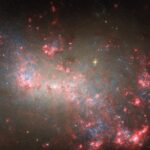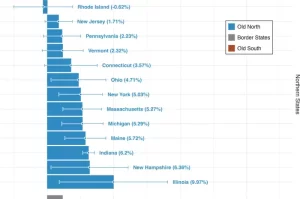Caltech researchers have introduced an innovative technique to explore the Earth’s deep interior, focusing on the Mohorovičić discontinuity (Moho). This boundary, located between the Earth’s crust and mantle, plays a crucial role in understanding tectonic activity.
The study, published in Science Advances on November 27, leverages cutting-edge seismic technology called distributed acoustic sensing (DAS) to map the Moho with unprecedented precision.Revolutionizing Earthquake Analysis with DASUnder the guidance of Zhongwen Zhan, Ph.D., a geophysics professor at Caltech, the research utilizes DAS to transform fiber optic cables into high-resolution seismometers.
This technology enables researchers to detect ground movements by analyzing laser reflections within the cables. By measuring these reflections over long distances, the cables effectively function as dense arrays of seismometers, offering a cost-effective and detailed approach to seismic monitoring.Imaging the Moho with High ResolutionLed by James Atterholt, Ph.D., a former graduate student and current postdoctoral fellow at the United States Geological Survey, the team used DAS technology to examine seismic waves reflected off the Moho.
This boundary, located 20–70 kilometers beneath the surface (about 45 kilometers in Southern California), reveals vital insights into tectonic processes.Unlike traditional methods, which often result in low-resolution imaging or high costs, DAS enables researchers to achieve kilometer-scale resolution over vast areas.
This breakthrough provides a more detailed understanding of the Earth’s interior.Insights into Tectonic and Volcanic ActivityOver two years, the team utilized a fiber optic cable in California’s Mojave Desert to study earthquakes and map the Moho. Their findings include:Garlock Fault Penetration: The second-largest fault in Southern California extends into the mantle, much deeper than previously believed.Coso Volcanic Field Dynamics: The Moho beneath this volcanically active region shows significant deformation.
The region’s subterranean “plumbing system” links a mantle heat source to a magma chamber in the crust.The Coso Volcanic Field, despite its last eruption 40,000 years ago, remains a hotbed of geothermal energy. Understanding its deep structure highlights the transformative potential of DAS technology.Expanding Applications for DAS”The Moho provides critical insights into tectonic plate dynamics,” says Atterholt. This method offers new opportunities to study seismic regions worldwide, even those with sparse traditional seismic networks. From examining fault behavior to exploring geothermal energy sources, DAS opens the door to countless applications.
This breakthrough demonstrates how DAS technology can revolutionize geophysics, offering high-resolution insights into Earth’s interior at a fraction of traditional costs.Meta Description: Discover how Caltech researchers are using distributed acoustic sensing (DAS) to explore Earth’s tectonic plates and map the Moho boundary with unmatched precision.

















+ There are no comments
Add yours